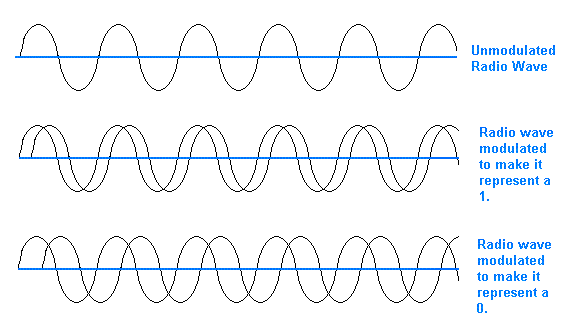CommunicationsHow does NASA communicate with spacecraft? |
In addition to sending information as AM or FM waves, NASA scientists have found a way to make the same waves do double duty--and send twice as much information at once--by modulating them.
If you quickly turn a tone off and on at the rate of a thousand times a second, we could say it is being modulated with a frequency of 1 kHz. Spacecraft carrier signals are modulated, not by turning off and on, but by shifting each waveform's phase slightly at a given rate. One scheme is to modulate the carrier with a frequency. This modulation is called a subcarrier. The subcarrier is in turn modulated to carry shifts that represent binary 1's and 0's. This is how telemetry data is sent.

The amount of phase shift used in modulating data onto the subcarrier is referred to as the modulation index, and is measured in degrees. The same kind of scheme is also used on the uplink. Demodulation is the process of detecting the subcarrier and processing it separately from the carrier, detecting the individual binary phase shifts, and decoding them into digital data for further processing. The same processes of modulation and demodulation are used commonly with Earth-based computer systems and fax machines transmitting data back and forth over a telephone line. The device used for this is called a modem, short for modulator / demodulator. Modems use a familiar audio frequency carrier which the telephone system can readily handle.
![]()
What are radio waves?
What is frequency?
What is wavelength?
How is data put on radio waves?
![]()
How much data is DS1 be able to transfer?
Is there only one stream of information coming from DS1?
More about radio waves and electromagnetic radiation.
What new communications features does DS1 use?
What is bandwidth?
![]()
What radio frequency does DS1 use for communications?
How do you make a radio wave?
![]()